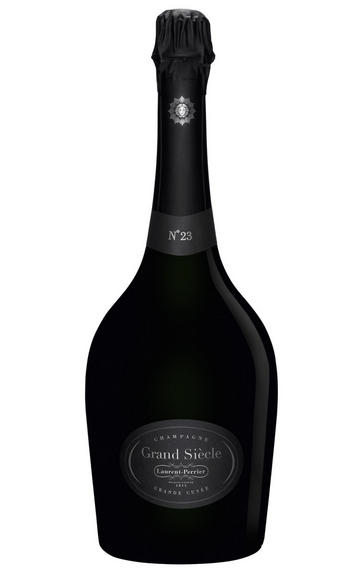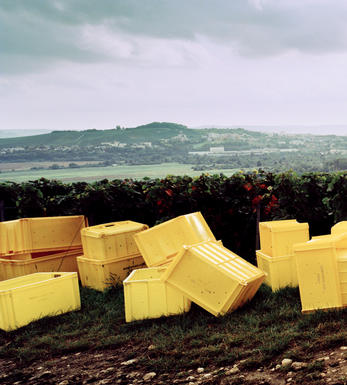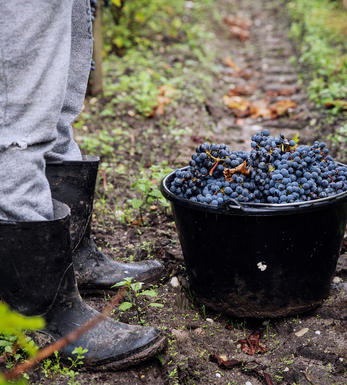
Champagne Laurent-Perrier, Grand Siècle No. 23, Brut

Critics reviews
The NV Brut Grande Cuvée Grand Siècle No. 23 (Magnum) is fascinating to taste within the context of the other wines in the series. The No. 23 is a decidedly vinous, ample Grande Siècle built on texture and resonance more than anything else. Lemon confit, lemon oil, marzipan, dried flowers and spice all flesh out as the wine opens up with air. The blend is 2006 (65%), 2004 (20%) and 2002 (15%). Disgorged May 27, 2019.
Drink 2020 - 2030
Antonio Galloni, vinous.com (Nov 2020)
Being released in magnum, the NV Brut Grand Siècle #23 is showing beautifully, mingling aromas of peach, pear, fresh pastry, citrus oil, buttered toast and white flowers. Full-bodied, fleshy and ample, it's elegantly gourmand, with fabulous depth and a long, expansive finish. This is a blend based on 2006, complemented by 2004 and 2002. The volume and texture characteristic of the 2006 and 2002 vintages take the lead here, with the 2004 bringing supplemental aromatic complexity. One of the more demonstrative recent renditions of Grand Siècle, this is a fabulous choice for drinking over the next decade or two.
Drink 2021 - 2040
William Kelley, Wine Advocate (Mar 2021)
Blend of 2006 with 2004 and 2002. Magnum – which is always aged several years longer than the wine that is released in bottle. This is the current magnum (late release) that is just launched in the UK. Aged 14 years on lees. Disgorged in 2021.
Deep colour. Pungent – this wine really whisks up the nose! Very fresh. Really vivacious. Lots of energy. Very expressive. Fantastic!
Drink 2022 - 2034
Jancis Robinson, jancisrobinson.com (Jun 2022)
About this WINE

Laurent Perrier
Laurent Perrier was founded by André-Michel Pierlot in 1812 in the village of Tours-sur-Marne. However, it was the Nonancourt family who made this the famous Champagne House it is today. Bernard de Nonancourt, a veteran of the Second World War, took charge of the firm aged just 28. He is credited with creating Laurent-Perrier’s house style, centred on freshness, finesse and elegance. Today, Lucie Pereyre de Nonancourt is the fourth generation of the family here.
Laurent-Perrier is unique in that its prestige cuvée, Grand Siècle, is a multi-vintage blend rather than a vintage Champagne. Each “iteration”, as they call their new releases, is produced from three vintages, carefully selected by the Cellar Master.
In 2023, Maximilien Bernardeau was appointed Cellar Master, following in the footsteps of the long-serving Michel Fauconnet.

Brut Champagne
Brut denotes a dry style of Champagne (less than 15 grams per litre). Most Champagne is non-vintage, produced from a blend from different years. The non-vintage blend is always based predominately on wines made from the current harvest, enriched with aged wines (their proportion and age varies by brand) from earlier harvests, which impart an additional level of complexity to the end wine. Champagnes from a single vintage are labelled with the year reference and with the description Millésimé.
Non-vintage Champagnes can improve with short-term ageing (typically two to three years), while vintages can develop over much longer periods (five to 30 years). The most exquisite and often top-priced expression of a house’s style is referred to as Prestige Cuvée. Famous examples include Louis Roederer's Cristal, Moët & Chandon's Dom Pérignon, and Pol Roger's Cuvée Sir Winston Churchill.
Recommended Producers : Krug, Billecart Salmon, Pol Roger, Bollinger, Salon, Gosset, Pierre Péters, Ruinart

Champagne blend
Which grapes are included in the blend, and their proportion, is one of the key factors determining the style of most Champagnes. Three grapes are used - Pinot Noir, Chardonnay and Pinot Meunier.
26% of vineyards in Champagne are planted with Chardonnay and it performs best on the Côtes des Blancs and on the chalk slopes south of Epernay. It is relatively simple to grow, although it buds early and thus is susceptible to spring frosts. It produces lighter, fresher wines than those from Burgundy and gives finesse, fruit and elegance to the final blend. It is the sole grape in Blancs de Blancs, which are some of the richest long-lived Champagnes produced.
Pinot Noir accounts for nearly 40% of the plantings in Champagne and lies at the heart of most blends - it gives Champagne its body, structure, strength and grip. It is planted across Champagne and particularly so in the southern Aube district.
The final component is Pinot Meunier and this constitutes nearly 35% of the plantings. Its durability and resistance to spring frosts make the Marne Valley, a notorious frost pocket, its natural home. It ripens well in poor years and produces a soft, fruity style of wine that is ideal for blending with the more assertive flavours of Pinot Noir. Producers allege that Pinot Meunier lacks ageing potential, but this does not deter Krug from including around 15% of it in their final blends.


Buying options
Add to wishlist
Description
We are delighted to offer a limited number of the Iteration 23 of Laurent Perrier’s prestige cuvée, Grand Siècle. The wine is a Chardonnay-dominant blend of three outstanding vintages: 2002, 2004 and 2006. Laurent Perrier believes that blending is the best way to achieve the perfect Champagne.
Available in magnum, this wine was aged for 14 years, two years more than a regular bottle, and displays intense aromas of peach, pastry, citrus oil and wild flowers. This will drink beautifully now, but will also age well for a decade or more.
wine at a glance
Delivery and quality guarantee